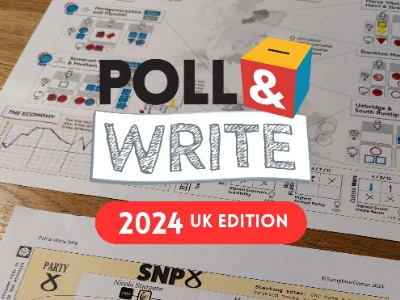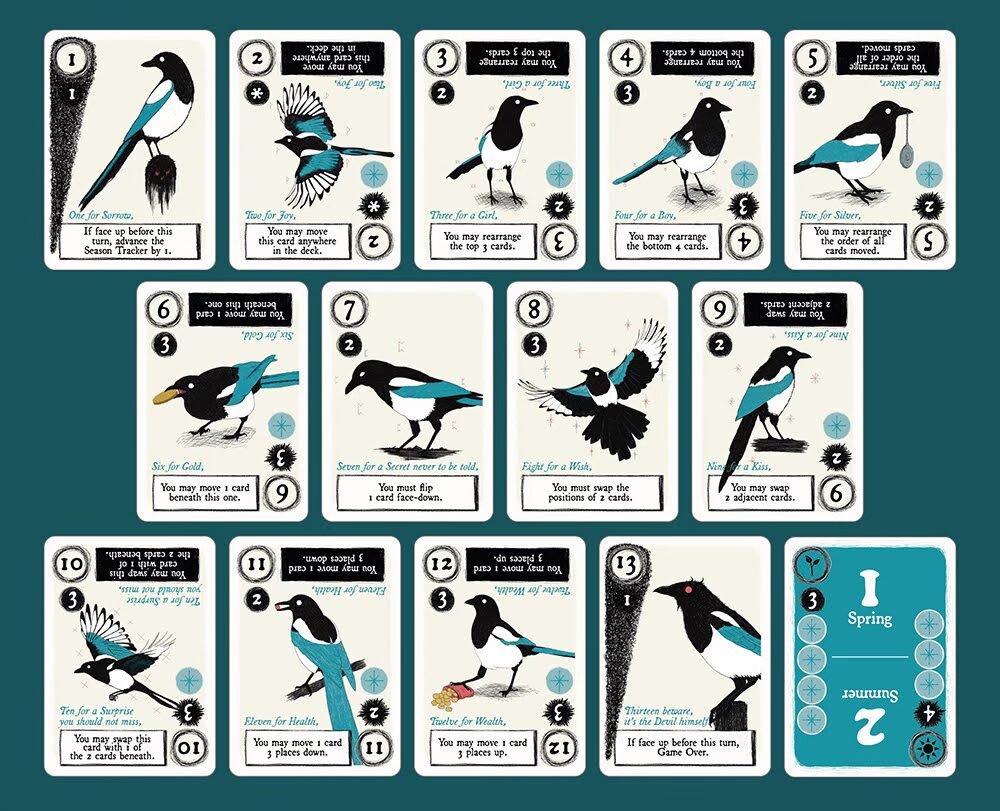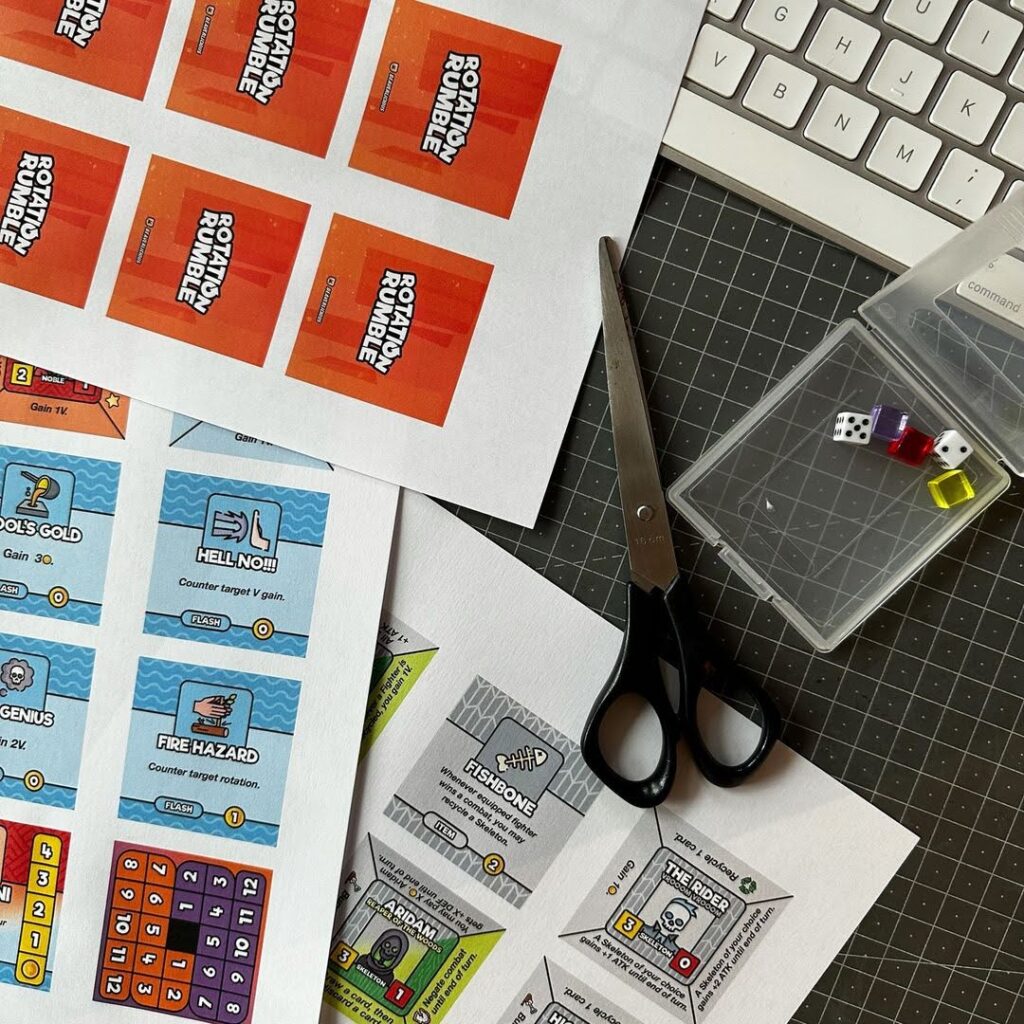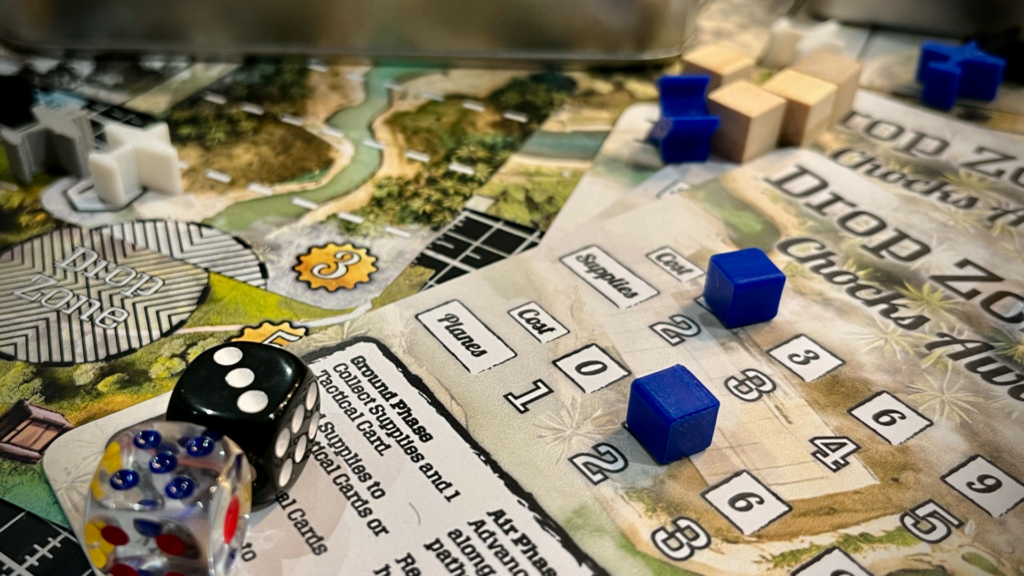I’ve been exploring the world of Print and Play games recently, and even trying my hand at designing a few. As I explored, I found an incredible world filled with brilliant designers, incredible creativity and amazing games. I thought I’d bring some of those designers together to share their perspectives on the Print and Play games genre.
This is Part 2 of a two-part blog on the topic, you can find Part 1 here!
There are 5 wonderful games designers contributing to this first post, if you’re not sure where to start role the dice.
Chris Backe | No Box Games | @noboxgames
As a print-and-play designer and publisher, print-and-play games hold a special place in my heart as a way to get my games out there for the world to enjoy. In my early days as a game designer, I was a digital nomad bouncing around many Eastern European countries – great places to stay for a while, great food… but not great for things like shipping and ordering things from the rest of the world. Locals would go to Essen or UKGE and ‘mule’ games home for their friends rather than spending more on shipping than they paid for the game.
This experience was years before I started making games with the print-and-play format in mind, but it’s been a reminder that access to games is far from universal. Print-and-play games make games more universally acceptable by reducing the overall cost of the game while increasing their availability. Today, with No Box Games, I’ve focused on working with as many community translators as possible to make our games as accessible as possible. Our first game, Spies, has 18 languages covered. Beards and Booty has 8 languages, Around the World in 10-15 Minutes has rules for 20 languages, and Dragon vs. Kingdom has 18 languages covered. It’s also influenced the design of our games – for Dragon vs. Kingdom, the sheets are completely textless. Our next game, Stake Your Claim, will also have sheets without text.
I see print-and-play games continuing to fill a wonderful niche, from experimental titles by self-publishers to carefully crafted games by players who love making their games their way. I see people being able to enjoy a wide selection of games wherever they happen to be, and have a lot of fun without breaking the bank or spending a ton of time setting something up. I look forward to seeing where print-and-play games go next, and I hope to be a part of it for years to come.
Sam Francis | Samphire Games | @samphiregames
For me, it was the success of Postmark Games’ Voyages Kickstarter that made me realise the potential there was in PnP. Not only did they create something easy to access (it’s just one page to print and you just need dice and pens), but they laboured a few points: that it’s ecologically friendly compared to manufactured boxed games being shipped around the world; that as a one-page game it could be played on a tablet without the need for a printer; that it was an affordable option – a way to get a game for the price of a pint, rather than investing your day’s pay on a Kickstarter project.

The success of that campaign showed me that this could be a route to solving the difficulty I had getting into game publishing – the cost of art and promotion to build a really successful crowdfunder. Of course it helped that they are a dream team of established and talented designers, ran a very good campaign, and made a great game. But from that point I could see that this was going to be one of the new industry trends – off the back of the explosion of roll-and-writes, the barrier to entry for publishing these games was low enough – and the audience interested enough – that there was bound to be an abundance of them soon.
And then when I got thinking about making an election game, the speed of the PnP format made for a fantastic way to respond immediately to current events! You can find my pnp game Poll & Write 2024 on pnp arcade!
Kev | @KevMakesGames | kevmakesgames.com
Print-and-play (PnP) games hold a special place for me in the board gaming world. They strip away the barriers of cost and complexity, offering players and designers a unique way to connect. While some PnP enthusiasts enjoy the intricate crafting of larger builds, I’ve always been drawn to simpler formats—games that can be printed, cut, and played within minutes. Roll-and-writes are a perfect example of this streamlined magic. With just a sheet of paper, a pencil, and some dice, these games can pack a surprising amount of strategy and replayability into a tiny package. Their simplicity invites players of all skill levels, making them a natural fit for the PnP world.
My love for PnP began when I stumbled across a contest on BoardGameGeek that invited designers to create in-hand games—games playable with just a few cards or minimal components. In a world where games often come with hefty price tags or complex setups, PnPs remind us that great ideas don’t need to be weighed down by production. The genre’s simplicity opens doors for new players, fosters creativity in designers, and strengthens the bond between them. To me, that’s the heart of print and play—a medium that’s as much about crafting connections as it is about crafting games.

My current PnP favourites include Galdor’s Grip, an in-hand card game, and Koala Rescue Club, a one-page roll-and-write. I’ve also created a few PnP games of my own: Infinity Rogue: Space Dungeon (a larger build), Ham Fisted (18 cards), and my latest work in progress, One for Sorrow (currently 14 cards). You can find them on my website at KevMakesGames.com
Jackson Pope | @jacksonpopeeg | www.eurydicegames.co.uk
I’ve been crafting games since 2002, mostly my own prototypes, but I’ve also sold what are essentially print and play games, where I’ve cut out the cards, tiles and hand-crafted the boxes to the tune of 1,000 copies across four different games: Border Reivers, It’s Alive!, Zombology and FlickFleet. I also run #CraftWednesday, initially on Twitter, then Threads and now Bluesky, to encourage and promote games-related crafting in others. As someone with a love of crafting games it was important to me that we supported that in others through Eurydice Games – we released the print and play files for Zombology and have provided files to laser-cut or 3D print the ships, along with PDFs of the rules and dashboards for FlickFleet and all five of its expansions. I like that P&P games reduce shipping and wastage – they are more environmentally friendly and I feel a special connection to games that I’ve physically crafted myself.
More recently I’ve branched out into print at home roll and write games, which are like print and play lite as all you need to do is print the player sheets and rulebook – there’s no real crafting required which meant I could very quickly iterate a new version during playtesting and development. Plus, they are very portable – I could easily take the latest version to work and play it solo or with friends during my lunch break. I love what Benny Sperling has been doing in this arena with his Roll and Write Revolution project. When combined with crowdfunding and digital delivery, it’s a very easy and low cost way to get access to new game ideas, without the massive investment required for traditional manufacturing, publishing and retail.
Robin Metz | Beaverlicious | @beaverlicious_games
Print-and-plays are truly unique because they foster a level of engagement you rarely see with “regular” games. When I released my game Rotation Rumble as a PnP file a few weeks ago, I was amazed to see it fully translated into Portuguese and Ukrainian by complete strangers within just two days. As someone who deeply admires grassroots movements, this was an incredible moment—one of the coolest “woooah” moments of my life.

What I also love about the PnP community is the sheer creativity it inspires. Complete redesigns, alterations, fan expansions, and more regularly surface on platforms like BGG and in dedicated Facebook groups. Sure, some of these creations tread close to trademark infringement, but honestly, they feel more like treasured bootlegs of a great concert—an expression of passion that, in my opinion, should be celebrated and supported by designers and publishers. After all, print-and-play has never been real competition to traditional game distribution; it’s an entirely different experience.
It’s also worth addressing a common misconception: PnP isn’t about saving money. Anyone who’s tried it will quickly realize that printing and cutting hundreds of cards takes hours of work – and printer supplies are far from cheap. The real draw of PnP lies in the dedication and craftsmanship of the community. As a designer, there’s no greater honor than seeing someone commit their valuable free time to bring your creation to life. Knowing that someone has spent hours crafting a game you designed is, for me, one of the highest achievements possible.
A huge thank you to today’s contributors, make sure you seek them out on Instagram and follow their incredible work. This was Part 2 of our exploration into Print and Play games, you can find Part 1 here.
Sign up for blog updates and you’ll also get a free Print and Play game!



Pingback: The wonderful world of Print and Play games: perspectives from the experts (Part 1) – What If Games
Pingback: Diary #64 – Sleeping Giants – Master of Olympus